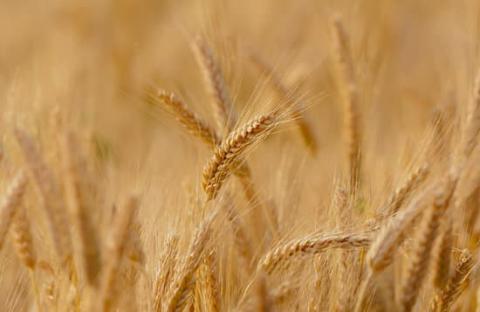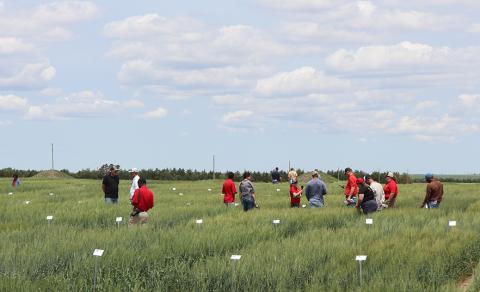
Husker Genetics Ruth brand (NE10589) is awned, tan glumed cultivar that is moderately late in maturity. It is a semi-dwarf variety that is approximately 33 inches in height. It has moderate straw strength and good winter hardiness. It was developed cooperatively by the Nebraska Agricultural Experiment Station and the USDA-ARS. It was selected from the cross OK98697/Jagalene//Camelot where the pedigree of OK98697 is TAM200/HBB313E//2158. PVPA
- Resistant to Soilborne wheat mosaic virus
- Moderately resistant to stem rust
- Moderately susceptible to leaf rust, and stripe rust
- Moderately susceptible to Fusarium head blight
- Moderately resistant to moderately susceptible to Hessian fly.
- Susceptible to barley yellow dwarf virus and wheat streak mosaic virus
Contact the following certified seed growers for this variety:
- Kriesel Certified Seed, Gurley, 308-884-2424
Related Articles
Uncommon Wheat Disease in the Nebraska Panhandle in 2023
April 24, 2024
Though rare for semi-arid regions, Fusarium head blight was present in the Nebraska Panhandle's 2023 wheat crop, and its effects have already been observed in this year's crop. This article highlights control options to mitigate yield loss in 2024.
This Week on N Field: Army Cutworm
April 19, 2024
Now is the time to scout for army cutworm in wheat and alfalfa. Learn more about identifying army cutworm damage to crops in this new N Field Observations.
UNL Schedules 2024 Wheat Variety Tours
April 4, 2024
During each of the eight tours across Nebraska in June, members of the UNL wheat research team and seed industry partners will share insights on varieties and answer questions about variety selection, production and pest/disease concerns.
Pasture and Forage Minute: Double Cropping Forages, Wheat Grazing vs. Grain Value
April 3, 2024
Insights on double cropping annual forages in irrigated cropland, avoiding grass tetany, and making the decision to use wheat as forage or grain this year.

Nebraska March 1, 2024 Grain Stocks
March 29, 2024
Wheat stocks are up 63% from a year ago, according to USDA NASS.



